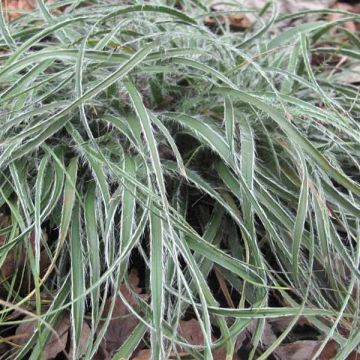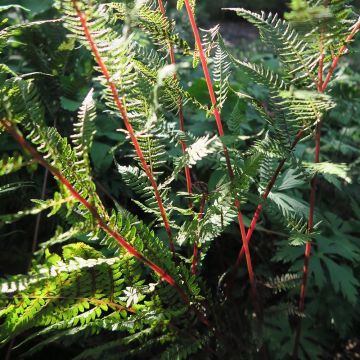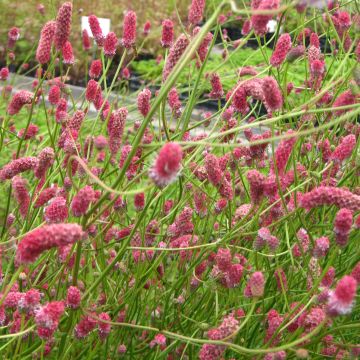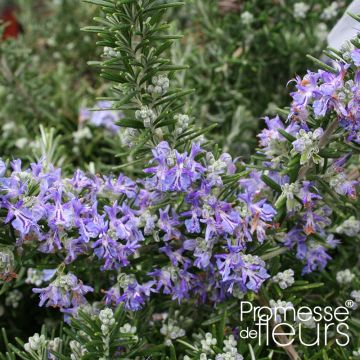

Opuntia hybrida Titania - Prickly Pear


Opuntia hybrida Titania - Prickly Pear
Opuntia hybrida Titania - Prickly Pear
Opuntia x hybrida Titania
Opuntia, Prickly Pear
Special offer!
Receive a €20 voucher for any order over €90 (excluding delivery costs, credit notes, and plastic-free options)!
1- Add your favorite plants to your cart.
2- Once you have reached €90, confirm your order (you can even choose the delivery date!).
3- As soon as your order is shipped, you will receive an email containing your voucher code, valid for 3 months (90 days).
Your voucher is unique and can only be used once, for any order with a minimum value of €20, excluding delivery costs.
Can be combined with other current offers, non-divisible and non-refundable.
Home or relay delivery (depending on size and destination)
Schedule delivery date,
and select date in basket
This plant carries a 12 months recovery warranty
More information
We guarantee the quality of our plants for a full growing cycle, and will replace at our expense any plant that fails to recover under normal climatic and planting conditions.
Would this plant suit my garden?
Set up your Plantfit profile →
Description
The Opuntia Titania is a hybrid species of cactus closely related to the prickly pear, and very interesting in the garden, for its lack of spines. Of fairly rapid growth, this plant has a very upright habit, with long paddles growing almost vertically. These paddles are a pretty green colour and are covered with a fine whitish bloom that adds to their ornamental appeal. This American species grows in full sun and can withstand moderate cold, around -6°C (21.2°F), as long as it is planted in well-draining soil. Therefore, it is best suited for cultivation in dry and warm Mediterranean climates. Everywhere else, it should be planted in a large pot for overwintering .
The Opuntia Titania is a succulent plant devoid of true leaves, from the Cactaceae family, which includes 90 genera and 2500 species. The Opuntia, also known as prickly pear or paddle cactus, comes in 250 species adapted to all climates in America and southern Europe. In this plant, adaptation to drought has transformed the stems into fleshy paddles and the leaves into spines, in order to limit evaporation and transpiration. The result is a highly graphic appearance that is particularly prized in gardens.
The Opuntia x 'Titania' is an American cultivar developed by Luther Burbank (1849-1926). It is a hybrid between Opuntia ficus-indica, the famous prickly pear from Mexico and naturalized in the Mediterranean region, and the much less known Opuntia tuna, native to Central America.
'Titania' refers to its large size, as this horticultural species can reach a height of 3m (10ft), or even 5m (16ft) under very favorable conditions, with a width of only 1m (3ft). It has a very upright appearance, with the original paddle producing two or three new paddles, which in turn generate more, allowing the plant to branch out. The paddles, also known as cladodes in plant physiology, have a very elongated elliptical shape, measuring up to 30cm (12in) in length, 10cm (4in) in width, and 1.5cm (0 and 1in) in thickness. They have a beautiful green colour with a slight bloom and stand upright, giving this plant a easily recognizable appearance.
Another characteristic that sets it apart from the majority of its relatives is that 'Titania' is completely devoid of spines! It is therefore a safe plant that can be installed at home or in the garden without worrying about the safety of children. With its superb aesthetics, this Opuntia may occasionally produce flowers, although less frequently than other species. Pretty yellow flowers measuring 5 or 6cm (2in) in diameter will bloom in spring, but their display is relatively short-lived.
This spineless Opuntia is perfect for decorating a conservatory or interior in climates too cold to accommodate it in the garden. In milder areas, especially in the Mediterranean south, it can be planted in a large rock garden, with a mineral backdrop populated by other drought-resistant plants. Plant alongside one of the many agaves with blue or green leaves, which give a resolutely exotic look to a rock garden. Another highly graphic plant, the Euphorbia pithyusa, or Balearic Spurge, forms a cushion with very dense glaucous vegetation. Slow-growing, it will find its place at the forefront of your rock garden. And for even more variety, plant the Hesperaloe parviflora, a perennial that forms a clump of extremely narrow leaves and is adorned in summer with long coral red flower spikes that are truly dazzling!
Report an error about the product description
Flowering
Foliage
Plant habit
Botanical data
Opuntia
x hybrida
Titania
Cactaceae
Opuntia, Prickly Pear
Central America
Other Perennials A to Z
View all →Planting and care
Plant the Opuntia Titania in spring or early autumn in a mild climate, in full sun, in a poor soil, even stony, limestone, sandy, but very well drained. It does not tolerate winter moisture combined with frost, and must imperatively be installed in a porous soil. It appreciates dry soils, even arid in summer, and does not fear heatwaves. Under good growing conditions, it will withstand frost down to around -6°C (21.2°F).
Cultivation substrate: 3/4 potting soil + 1/4 garden soil + organic fertilizer for potted plants. Sandy soil, very stony, poor in clay for in-ground cultivation. To maximize the chances of success, it is advisable to have a slight slope for rainwater to drain quickly (or to plant on a slight mound).
Multiplication by cutting from a prickly pear pad: take a pad at a joint, place it on a cactus soil substrate for a few days, until a healing callus forms. Then, bury the base of the cutting a little deeper in the soil and water regularly. The plant will not flower or bear fruit before the age of three.
Planting period
Intended location
Care
This item has not been reviewed yet - be the first to leave a review about it.
Similar products
Haven't found what you were looking for?
Hardiness is the lowest winter temperature a plant can endure without suffering serious damage or even dying. However, hardiness is affected by location (a sheltered area, such as a patio), protection (winter cover) and soil type (hardiness is improved by well-drained soil).

Photo Sharing Terms & Conditions
In order to encourage gardeners to interact and share their experiences, Promesse de fleurs offers various media enabling content to be uploaded onto its Site - in particular via the ‘Photo sharing’ module.
The User agrees to refrain from:
- Posting any content that is illegal, prejudicial, insulting, racist, inciteful to hatred, revisionist, contrary to public decency, that infringes on privacy or on the privacy rights of third parties, in particular the publicity rights of persons and goods, intellectual property rights, or the right to privacy.
- Submitting content on behalf of a third party;
- Impersonate the identity of a third party and/or publish any personal information about a third party;
In general, the User undertakes to refrain from any unethical behaviour.
All Content (in particular text, comments, files, images, photos, videos, creative works, etc.), which may be subject to property or intellectual property rights, image or other private rights, shall remain the property of the User, subject to the limited rights granted by the terms of the licence granted by Promesse de fleurs as stated below. Users are at liberty to publish or not to publish such Content on the Site, notably via the ‘Photo Sharing’ facility, and accept that this Content shall be made public and freely accessible, notably on the Internet.
Users further acknowledge, undertake to have ,and guarantee that they hold all necessary rights and permissions to publish such material on the Site, in particular with regard to the legislation in force pertaining to any privacy, property, intellectual property, image, or contractual rights, or rights of any other nature. By publishing such Content on the Site, Users acknowledge accepting full liability as publishers of the Content within the meaning of the law, and grant Promesse de fleurs, free of charge, an inclusive, worldwide licence for the said Content for the entire duration of its publication, including all reproduction, representation, up/downloading, displaying, performing, transmission, and storage rights.
Users also grant permission for their name to be linked to the Content and accept that this link may not always be made available.
By engaging in posting material, Users consent to their Content becoming automatically accessible on the Internet, in particular on other sites and/or blogs and/or web pages of the Promesse de fleurs site, including in particular social pages and the Promesse de fleurs catalogue.
Users may secure the removal of entrusted content free of charge by issuing a simple request via our contact form.
The flowering period indicated on our website applies to countries and regions located in USDA zone 8 (France, the United Kingdom, Ireland, the Netherlands, etc.)
It will vary according to where you live:
- In zones 9 to 10 (Italy, Spain, Greece, etc.), flowering will occur about 2 to 4 weeks earlier.
- In zones 6 to 7 (Germany, Poland, Slovenia, and lower mountainous regions), flowering will be delayed by 2 to 3 weeks.
- In zone 5 (Central Europe, Scandinavia), blooming will be delayed by 3 to 5 weeks.
In temperate climates, pruning of spring-flowering shrubs (forsythia, spireas, etc.) should be done just after flowering.
Pruning of summer-flowering shrubs (Indian Lilac, Perovskia, etc.) can be done in winter or spring.
In cold regions as well as with frost-sensitive plants, avoid pruning too early when severe frosts may still occur.
The planting period indicated on our website applies to countries and regions located in USDA zone 8 (France, United Kingdom, Ireland, Netherlands).
It will vary according to where you live:
- In Mediterranean zones (Marseille, Madrid, Milan, etc.), autumn and winter are the best planting periods.
- In continental zones (Strasbourg, Munich, Vienna, etc.), delay planting by 2 to 3 weeks in spring and bring it forward by 2 to 4 weeks in autumn.
- In mountainous regions (the Alps, Pyrenees, Carpathians, etc.), it is best to plant in late spring (May-June) or late summer (August-September).
The harvesting period indicated on our website applies to countries and regions in USDA zone 8 (France, England, Ireland, the Netherlands).
In colder areas (Scandinavia, Poland, Austria...) fruit and vegetable harvests are likely to be delayed by 3-4 weeks.
In warmer areas (Italy, Spain, Greece, etc.), harvesting will probably take place earlier, depending on weather conditions.
The sowing periods indicated on our website apply to countries and regions within USDA Zone 8 (France, UK, Ireland, Netherlands).
In colder areas (Scandinavia, Poland, Austria...), delay any outdoor sowing by 3-4 weeks, or sow under glass.
In warmer climes (Italy, Spain, Greece, etc.), bring outdoor sowing forward by a few weeks.



















































